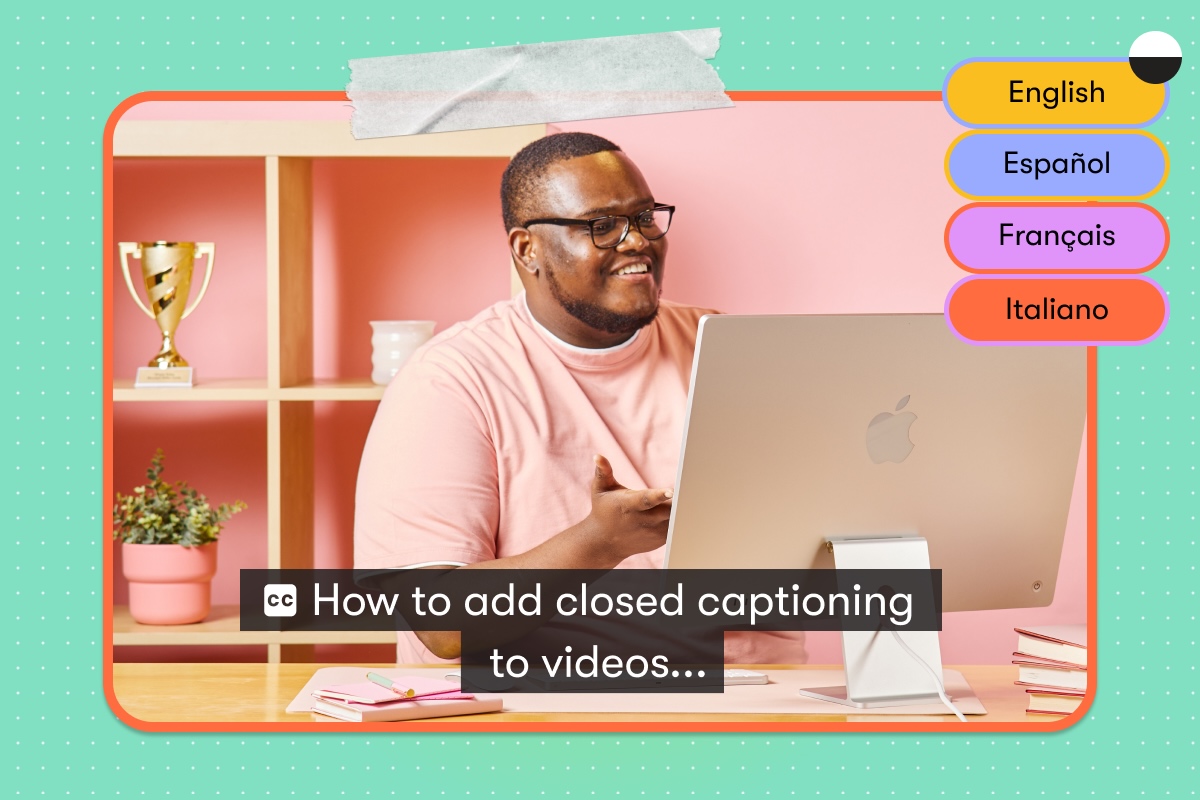Why Videos Featuring Humans Are Easier to Trust
September 14, 2017
Topic tags
We’ve written time and time again about why it’s best to include faces in your videos. They capture attention and build a sense of familiarity, because human brains are hardwired to recognize faces.
But the importance of having a human in your video goes much deeper than surface-level familiarity. People are also more likely to understand and trust what your video is saying when they can see the human behind the voice.
When we think of speech, we think of it as something we hear. But we actually perceive speech in more than just one way — we take in visual as well as auditory cues when we’re processing speech.
So when you include people in your videos, your audience can better understand what is being communicated and form more meaningful connections with your content. We’ll take a closer look at the science behind speech perception, how it relates to trust, and how to make your next video more convincing.
We’re hardwired to be judgmental
When you’re watching a video or listening to a podcast, you might think that the reason you trust whoever is speaking is because they’re an expert in their field. It makes sense. Out of anyone, “experts” should be the people who have the most accurate information. But in reality, lots of experts aren’t trusted.
Think about a controversial topic, like climate change. Even though many scientists are talking about how it’s a real threat, there are still many people who don’t believe it exists. But why? Shouldn’t we be listening to people who’ve spent years studying it? A study published in 2009 found that rather than trusting those who have the most expertise, we are more likely to trust those who we believe have our best interests at heart.
So how do we decide who has our best interests at heart? A study by Princeton psychologists found that in just a tenth of a second, we form impressions of strangers from their faces alone. Our amygdala automatically responds based on how trustworthy we determine a face to be.
“In just a tenth of a second, we form impressions of strangers from their faces alone.”
In fact, a New York University study found that certain facial features are generally perceived to be more “trustworthy.” Faces with “higher inner eyebrows and pronounced cheekbones” were seen as more trustworthy while “lower inner eyebrows and shallower cheekbones” were associated with untrustworthiness. We tried our best to reproduce these scientific findings …
Other studies also suggest subtle things, like the amount of white showing in the eyes, as other factors of trustworthiness.
Aside from the initial facial scan, we also rely on unconscious estimates based on past experiences and preconceptions to make a judgement. These judgements can be influenced by a number of small factors like:
- Where we meet them
- What they’re wearing
- Whether their posture mimics our own
- Whether they mention a mutual acquaintance
Once this quick judgement has been made, our amygdala then begins to alter brain processes and coordinate appropriate responses, depending on whether we decide to approach or avoid that person.
Appealing to all the senses
So how can we make people in our videos seem trustworthy? Does it mean people on camera should make sure to open their eyes really wide and show as much white as possible?
It’s a good thought, but probably not best practice. It’s important to remember that just having a trustworthy-looking face isn’t enough to get people to actually listen to your video’s message.
Humans care about trustworthy faces, but as we mentioned earlier, speech perception relies on both visual and auditory cues. This brings us to something called the McGurk Effect.
“Speech perception relies on both visual and auditory cues.”
When we think about communication, usually we can both see and hear the speaker. But it’s only when we lose the visual part of this equation that we realize how much influence vision has on our speech perception. Take a look at this video:
The same sound is being played over and over. If we look to the left side of the screen, it seems like she’s saying “far.” But if we glance to the right, suddenly the sound becomes “bar” in our minds. The visual information you’re getting from the video changes how you perceive the auditory information you’re hearing. This phenomenon shows just how closely linked hearing and vision are.
Just one factor, whether it’s a great speech or a trustworthy face, isn’t going to be enough to immediately convince your audience. It’s really a combination of multiple factors, appealing to both the visual and aural senses, that will help you create a compelling video.
How to get people to listen to your video
When someone clicks on your video, they’re choosing to invest their time in your content. They’re expecting to get something of value from the experience. So you need to be speaking in a way that will make people want to listen. Julian Treasure, Chairman of The Sound Agency, has an easy acronym to follow if you want to sound more convincing:
- Honesty (H): Be truthful with what you say. Make sure you’re delivering information in a clear way, so it doesn’t seem like you’re trying to hide details.
- Authenticity (A): Be yourself. The audience can sense if you’re uncomfortable, and they’ll mirror that feeling.
- Integrity (I): Practice what you preach. If you don’t follow what you’re telling people to do, there’s no reason they should listen to you.
- Love (L): If you’re truly wishing someone well or caring for your audience, they’ll notice it.
“HAIL” can apply to all types of performances to help you to look like a practiced public speaker who really cares about their audience. But when filming a video, you need to be conscious of more than just your speech.
- Keep your background free of distractions. You want the focus to be on the speaker and not on the dog running around in the frame (no matter how cute he is).
- Put important things in writing. If your video is on the longer side, it’s easy for people to zone out and forget the main points. Emphasizing larger points in writing will also give your video more structure.
- Mind your body language. Your body language speaks just as loudly as your words. Make sure to stand tall and gesture with confidence.
- Use verbal cues. Say things like “once that’s done” or “next” to direct the flow of the video, so it feels like things are moving. A stagnant conversation is a boring one.
A video is more than the sum of its parts
Having a trustworthy face isn’t enough to convince people to watch your video. Nor is just having a compelling narrative. If you take the time to consider all the aspects that contribute to speech perception, you’ll be better equipped to make a video that connects with your audience.






